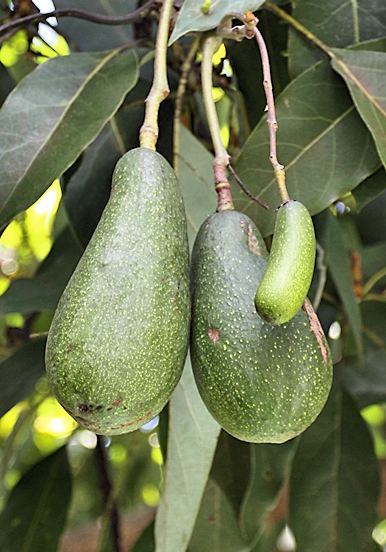 | ||
Avocado production is important to the economy of Mexico with the country being the world's largest producer of the crop. Mexico supplies 45 percent of the international avocado market. Of the 57 avocado producing countries, the other major producers are Chile, Indonesia, United States, Dominican Republic, Colombia, Brazil and Peru in that order.
Contents
The 'Avocado Belt of the Mexican Republic' includes Michoacán and the State of Mexico. The major cultivars in Mexico are Fuerte, Hass, Bacon, Reed, Criollor, and Zutano.
Background
Avocado is native to Central Mexico where its ancient history, established by archaeological evidence, is traced to Tehuacán, in Puebla state, about 12,000 years ago. Nuevo León state has remnants of primitive avocado trees. It spread to other countries in the Americas including the United States. It is a "functional food" in the Americas; the many varieties which grow in Mexico suit the climatic conditions.
In the 1950s, orchards of Fuerte cultivar were established; two decades later, orchards of Hass cultivar were established and it became the country's leading cultivar. In 2007, the avocado was Mexico’s fifth ranked fruit crop. Being a staple food, the majority of avocados produced in Mexico are consumed in the country. Fresh domestic consumption for 2010-11 was forecast at 806,119 metric tons (888,594 short tons; 793,388 long tons), representing an 8.45 percent increase over the previous year.
Production
Mexican avocado production is concentrated in Michoacán state in west central Mexico. Accounting for 92% of the country's production of the crop, Michoacán leads the world in avocado production, with approximately 106,000 hectares (260,000 acres). The yield reported from Michoacán is 4 metric tons per hectare (1.6 long ton/acre; 1.8 short ton/acre) and can reach up to 8 metric tons per hectare (3.2 long ton/acre; 3.6 short ton/acre), much higher than comparable figures in the U.S. state of California.
The favourable conditions for large production in the country is on account of availability of land, cheap labour, and rainfall pattern. Harvesting techniques incorporate hand‐held poles and baskets, picking the crop when it is mature, though still hard. In 1985, production estimates were 401,000 metric tons (442,000 short tons; 395,000 long tons).
During the period 2001 to 2011, its production increased from 9,400,000 metric tons (10,400,000 short tons; 9,300,000 long tons) to 12,640,000 metric tons (13,930,000 short tons; 12,440,000 long tons). During the same period, exports from Mexico, which was the largest among all countries, increased from 893,000 metric tons (984,000 short tons; 879,000 long tons) to 3,470,000 metric tons (3,830,000 short tons; 3,420,000 long tons). As of 2003, the land area under this cultivar was 348,769 ha (861,830 acres) with a production of 2,583,226 metric tons (2,847,519 short tons; 2,542,428 long tons) a year.
As of 2013, FAO reported 21,511 producers of avocado in Mexico out of which 10,000 were from Michoacán. This also created 279 packinghouses and domestic traders and 17 packinghouses/exporters. Fourteen processing industries came to be established which produced products such as guacamole, pulp, halves, frozen products, beverages and non-refined oil. These activities created more than 40,000 direct jobs, about 70,000 seasonal jobs, and more than 180,000 indirect permanent jobs.
Exports
Its export potential is constrained due to the quality of the product. Exports increased more than 4-fold in the period from 2000 to 2011, and in 2011 it accounted for 27.45 percent of its total production of 12,640,000 metric tons (13,930,000 short tons; 12,440,000 long tons). Its export in the raw form is limited due to the problem of several species of avocado weevils. Beginning in 1914, the US began restricting avocado imports to reduce the chances of weevil outbreaks. Avocado products like avocado pulp, avocado paste and guacamole are more popular for exports, and in this form its export to the US matched the import of value of all imported fresh avocados.
